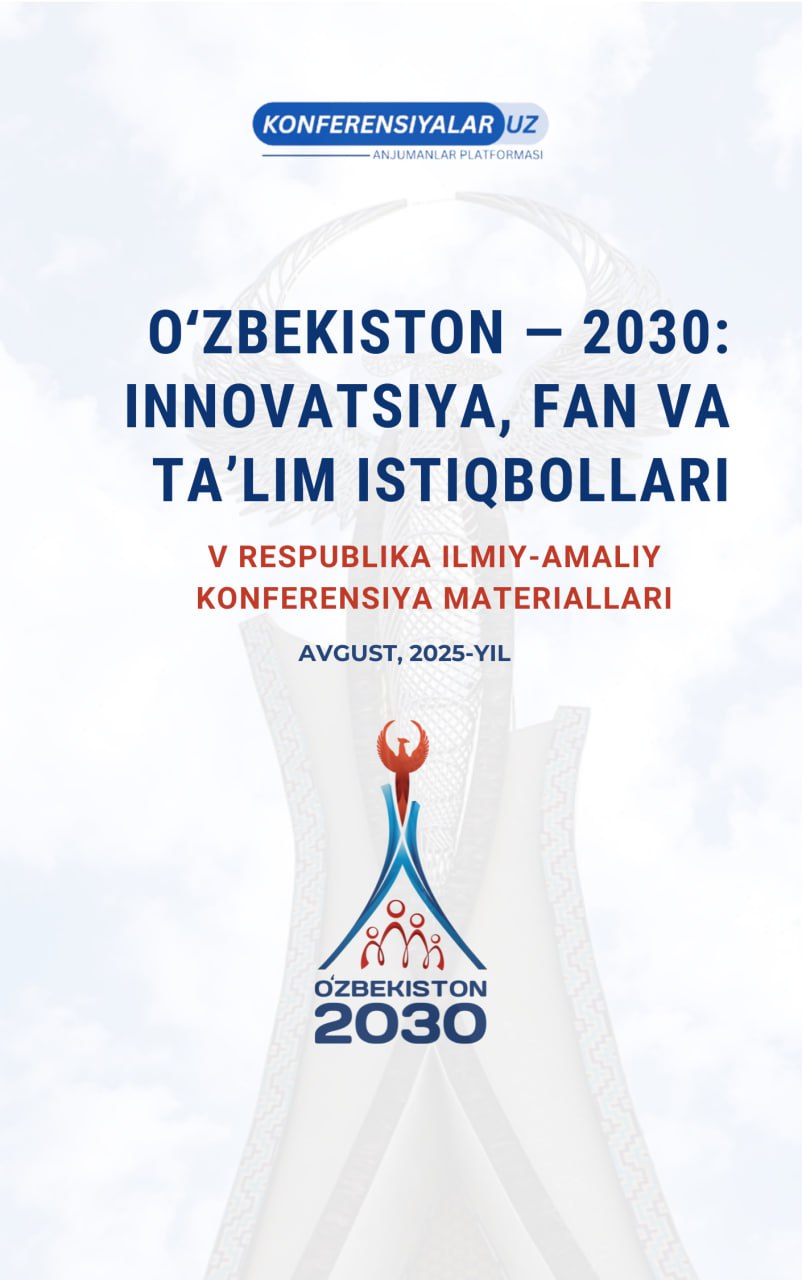MILODDAN AVVALGI II–I ASRLARDA IPAK YO‘LI BO‘YLAB ELITA QABR INSHOOTLARIDA ME’MORIY VA MADANIY SINTEZ
Kalit so'zlar
miloddan avvalgi II–I asrlar, Toshkent havzasi, elita qabristonlari, Ipak yo‘li, ellinistik ta’sir, Xitoy ta’siri, ko‘chmanchi an’analar, tumulus, krematsiya, inhumatsiya, madaniy sintez, arxeologik merosni muhofaza qilish, LiDAR, fotogrammetriyaAnnotasiya
Maqolada miloddan avvalgi II–I asrlarda Toshkent havzasi va unga tutash hududlarda aniqlangan elita qabristonlarining me’moriy-tipologik xususiyatlari, marosimiy amaliyotlari va madaniy sintezi kompleks tarzda tahlil etiladi. Tadqiqotda arxeologik qazishma hisobotlari, muzey kolleksiyalari hamda dala kuzatuvlari asosida yig‘ma tuproq tumuluslar, ellinistik tipdagi to‘rtburchak qabr xonalari va Xan sulolasi davri Xitoy dafn me’morchiligiga yaqin yer osti galereyalarining shakllanish jarayoni yoritiladi. Qabr jihozlari tarkibida oltin va kumush taqinchoqlar, Xitoy bronza oynalari, ellinistik naqshli sopollar va mahalliy ustaxonalar mahsulotlari uchrashi, hududning Ipak yo‘li savdo-madaniy tarmog‘idagi faol integratsiyasini ko‘rsatadi. Dafn marosimlarida krematsiya va inhumatsiya usullarining birgalikda qo‘llanishi davrning ko‘p qatlamli va eklektik madaniy muhitidan dalolat beradi. Shuningdek, maqolada ushbu noyob tarixiy meros ob’ektlarini eroziya, urbanizatsiya va noqonuniy qazish ishlari kabi omillardan himoya qilish uchun LiDAR va fotogrammetriya asosida raqamli hujjatlashtirish, mahalliy hamjamiyatlarda merosni asrash bo‘yicha ma’rifiy dasturlar amalga oshirish zaruriyati ta’kidlanadi.
Manbalar
1. Abdullaev B. Mogilnik Djarkutan // IMKU. - Tashkent, 1979. -№15.
2. Agzamxodjaev T. Raskopki pogrebalnyx kurganov bliz stantsii Vrevskaya // IMKU. - Tashkent: 1961. - № 2.
3. Akishev A.K. Isskusstvo and mythology sakov. Alma-Ata: Nauka, 1984.
4. Акишев Курган Иссык. Искусство саков Казахстана.// М.: «Искусство». 1978. 132 с.
5. BURCHARD BRENTJES. Graves and Rituals in the Central Asian Steppes in the First Millennium BC
6. Debaine-Francfort, C. (1988) Archéologie du Xinjiang des origines aux Huns, I. Paléorient 14, 5-29. Pari
7. Mandelshtam A.M. Pamyatniki kochevnikov kushanskogo vremeni v Severnoy Baktrii. - L .: Nauka. 1975. 27.
8. Matboboev B.X. Reflection of the early medieval religious views of the population of the Fergana Valley at funerals (on the example of Munchoktepa) // UMMT. № 35. - Tashkent: 2006.
9. Litvinskij, B.A. (1984) Eisenzeitliche Kurgane zwischen Pamir und Aral-See (Materialen zur Allgemeinen und Vergleichenden Archäologie 22). München.





